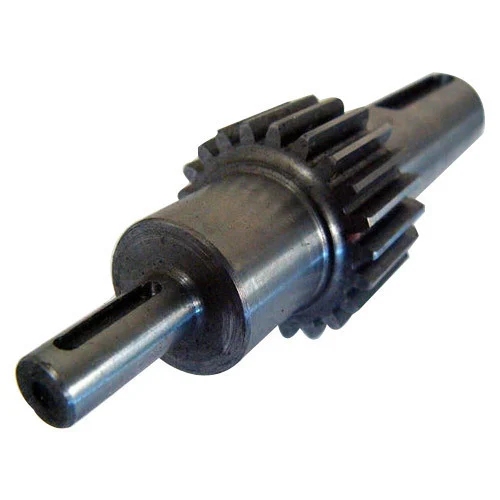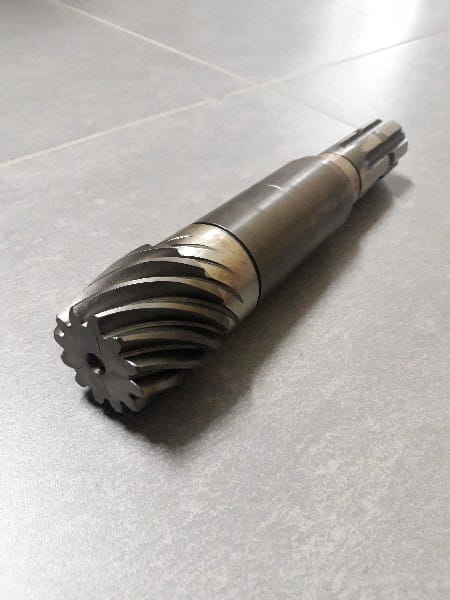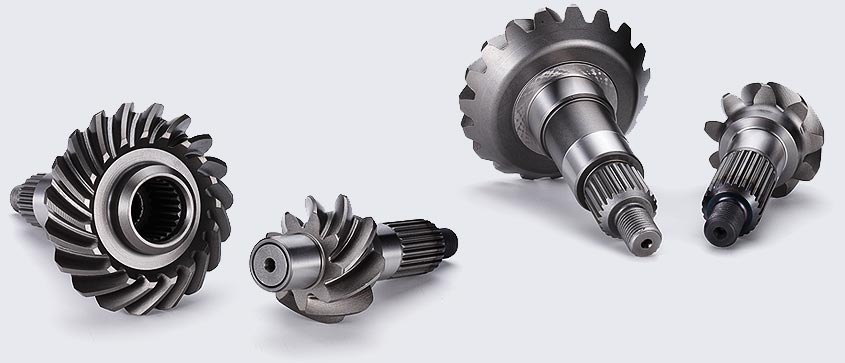Product Description
Product Description
Free Forging and Open Die Forging factory for 30 years. ZPMC, CHINAMFG and ZheJiang Electric long term stable supplier.
Our Forged Steel Products
Tiangong Forging supplies a variety of semi-finished forged steel products, with the main materials being nickel-molybdenum steel, alloy steel, die steel, stainless steel and carbon steel. In addition to general steel grades such as 35#, 45#, 42CrMo, 42CrMo4, 18CrNiMo7-6, 20CrNi2Mo, 30CrNiMo8 and etc., we can also prepare the required steel according to other national specifications or specified alloy compositions requested by customers.
The maximum production shaft forging length/weight is 12m/15T; the maximum gear and wheel forging diameter/weight is 1.9m/9T.
We are particularly specialized in the forging of special-shaped forging parts.
Our main products:
A.Forged Gear Blank
B.Wheel and Pulley
C.Forged Shaft
D.Hollow Shaft
E.Crankshaft
F.Multi-stepped Shaft
G.Various forged blank and block
I. Special-shaped Forging Parts
Product Parameters
Our open die forging process capabilities include:
|
ITEM |
MAX OD |
MAX HEIGHT |
|
Gear |
120″ |
20″ |
|
ITEM |
MAX OD |
MAX THICKNESS |
|
RECTANGLE / BLOCKS |
20″ |
8,000 |
|
ITEM |
MAX DIAMETER |
MAX LENGTH |
|
SHAFTS |
36″ |
78″ |
|
ITEM |
MAX OD |
MAX LENGTH |
|
CYLINDERS |
50″ |
40″ |
More Products
Production Flow Chart
Certifications
Factory Show
Our company located in HangZhou city, ZheJiang province. Neaby ZheJiang . With over 30 years of forging experience. Our focus is on using high-efficiency electro-hydraulic hammer facilities to produce free forged and open-die forged products.
We are proud of our independent quality assurance laboratory, which ensures that all of our products meet our customers’ requirements.
A. More than 25 years of professional free forging and open-die forging manufacturing experience
B. The company covers an area of 71,000 square CHINAMFG
C. The construction area of the production workshop is 12,000 square CHINAMFG
D. Total number of employees: 158
E. 28 engineering and technical personnel
F. 59 skilled workers
G. Annual production capacity is 38,000 tons
H. Annual raw material steel throughput turnover reaches 56,000 tons
Reliable production
At Tiangong Forging, we invest in production equipment every year to maintain and further improve the quality of our products.
The only way to achieve the required quality is to start with a correctly specified material and process it on an efficient forging machine. To ensure the final standards required by our customers, a correct and precisely controlled heat treatment process is a key factor.
Various types of high-precision machining equipment are also an important part of providing products with high customer satisfaction.
- 12 tons Electro-hydraulic Hammer with Operating Machine
- 8 tons Electro-hydraulic Hammer with Operating Machine
- 5 tons Electro-hydraulic Hammer with Operating Machine
- 20 tons Loader
- 5 tons Loader
- Natural Gas Pre-forging Heating Furnace
- Heat Treatment Electric Furnace
- There are 5 heat treatment electric furnaces with loading capacities of 5 tons, 15 tons, 50 tons, 60 tons and 60 tons respectively.
- Various Machining Equipment
- The machining center has multiple high-precision machining equipment such as CNC vertical lathes, CNC horizontal lathes, horizontal milling machines, radial drilling machines, ordinary horizontal lathes, sawing machines, etc
Main Mateirals: Carbon Steel, Stainless Steel and Alloy steels;
International Standards: ASME, JIS, DIN, GB, BS, EN, AS, SABS, etc.
Standardization and Customization are both our advantages.
Application:
Our parts are widely used in Chemical Industry, Wind power generator, Large machinery parts Chemical industry,Agricultural machinery parts ship shaft fittings. Wind Power gearbox Transmission system.
HangZhou Port, HangZhou automatic Port, ZheJiang Yang shan Port, Italy Vado port. ZheJiang Tailway crane, Egypt hanging bridge, Sri Lanka railway crane, Thailand port bridge. South Korea railway crane, Hongkong island bridge, Singapore railway crane, Russia oil & mining machines and some miltary project. etc.
Customized solutions
Our modular process allows us to design solutions various industrial application requiring free-forged and open-die-forged parts. Our modularity means flexibility, wide choice, faster delivery and, above all, competitiveness.
All Tiangong Forging, products and production processes are designed to ensure exceptional, reliable and long-lasting unique mechanical properties, thereby reducing operating costs and extending service life.
With an extensive product range and extensive experience gained in most industrial applications, we can also provide engineering advice to our customers.
Welcome to visit our factory! Welcome to send inquiry to us.
Welcom Trading compamy to co-operate.
/* January 22, 2571 19:08:37 */!function(){function s(e,r){var a,o={};try{e&&e.split(“,”).forEach(function(e,t){e&&(a=e.match(/(.*?):(.*)$/))&&1
| Processing Object: | Metal |
|---|---|
| Molding Style: | Forging |
| Molding Technics: | Free Forging |
| Samples: |
US$ 1000/Ton
1 Ton(Min.Order) | Order Sample |
|---|
| Customization: |
Available
| Customized Request |
|---|
.shipping-cost-tm .tm-status-off{background: none;padding:0;color: #1470cc}
| Shipping Cost:
Estimated freight per unit. |
about shipping cost and estimated delivery time. |
|---|
| Payment Method: |
|
|---|---|
|
Initial Payment Full Payment |
| Currency: | US$ |
|---|
| Return&refunds: | You can apply for a refund up to 30 days after receipt of the products. |
|---|

Can you explain the impact of gear shaft misalignment on gear performance?
Gear shaft misalignment can have a significant impact on the performance of gears within a system. When gear shafts are not properly aligned, several issues can arise, affecting the overall functionality and reliability of the gears. Let’s explore the impact of gear shaft misalignment in detail:
- Reduced Efficiency:
Misalignment causes a loss of efficiency in gear systems. When gear shafts are misaligned, the teeth of the gears do not mesh correctly, leading to increased friction and energy losses. This results in reduced power transmission efficiency, as a portion of the input power is dissipated as heat instead of being effectively transferred through the gears.
- Increased Wear and Fatigue:
Misalignment can lead to uneven contact and loading between gear teeth. This uneven distribution of forces causes localized high-stress areas on the gear teeth, leading to accelerated wear and fatigue. The concentrated stress on specific areas of the teeth can result in pitting, wear, and even tooth breakage over time. Increased wear and fatigue significantly reduce the lifespan of gears and can lead to unexpected failures.
- Noise and Vibration:
Gear shaft misalignment often results in increased noise and vibration levels within the gear system. As the misaligned teeth engage, they generate excessive noise due to impact and increased friction. The vibrations caused by the misalignment can propagate through the gear assembly and the surrounding components, causing additional noise and potentially affecting the performance and lifespan of the entire system.
- Loss of Tooth Contact:
Misalignment can cause a loss of proper tooth contact between the gears. Insufficient tooth contact reduces the load-carrying capacity of the gears and compromises the transmission of torque. The reduced contact area also increases the likelihood of localized stress concentrations, leading to premature wear and failure.
- Overloading and Unbalanced Loads:
Gear shaft misalignment can result in overloading and unbalanced loads on the gears. Misalignment can cause uneven distribution of forces, with some teeth bearing a higher load than others. This can lead to excessive stress on specific gear teeth, potentially exceeding their load-carrying capacity. Over time, the overloading of certain teeth can result in accelerated wear, tooth breakage, and even catastrophic gear failure.
- Seal and Bearing Issues:
Misalignment can also affect the performance of seals and bearings within the gear system. Misaligned gear shafts can create additional radial or axial loads on the bearings, reducing their lifespan and causing premature failure. Seal integrity can also be compromised, leading to leaks and contamination of the gear system, further exacerbating the issues associated with misalignment.
In summary, gear shaft misalignment has a detrimental impact on gear performance. It reduces efficiency, increases wear and fatigue, generates noise and vibration, causes loss of tooth contact, leads to overloading and unbalanced loads, and affects the performance of seals and bearings. Proper alignment of gear shafts is crucial to ensure optimal gear performance, longevity, and reliable power transmission within the gear system.

What is the significance of gear shaft alignment in mechanical systems?
Gear shaft alignment holds great significance in mechanical systems where gears are employed. Proper alignment of gear shafts is crucial for ensuring optimal performance and longevity of the system. Let’s explore the significance of gear shaft alignment:
- Efficient Power Transmission:
Accurate alignment of gear shafts facilitates efficient power transmission within the mechanical system. When gear shafts are properly aligned, the gear teeth mesh smoothly and engage without unnecessary friction or resistance. This minimizes power losses due to misalignment, reducing energy wastage and maximizing power transfer efficiency. Efficient power transmission ensures that the mechanical system operates at its intended performance level.
- Reduced Wear and Damage:
Proper gear shaft alignment helps in reducing wear and damage to the gears and other components within the mechanical system. Misalignment can cause excessive stress on the gear teeth, resulting in accelerated wear and premature failure. By aligning the gear shafts correctly, the load is evenly distributed, preventing concentrated stress points. This leads to reduced wear, improved gear life, and decreased chances of unexpected breakdowns or malfunctions.
- Noise and Vibration Reduction:
Misalignment of gear shafts can lead to increased noise and vibration levels within the mechanical system. When gears are not properly aligned, they may generate excessive vibration and noise during operation. This can be detrimental to the overall performance and user experience. Proper gear shaft alignment ensures that the gears mesh accurately, reducing vibration and noise. It contributes to a quieter and smoother operation of the mechanical system.
- Optimal Load Distribution:
Alignment of gear shafts enables optimal load distribution among the gears. When gear shafts are aligned correctly, the load is evenly shared across the gear teeth and their supporting components. This prevents overloading of specific gears, minimizing the risk of premature wear or failure. Proper load distribution enhances the overall reliability and efficiency of the mechanical system, as each gear operates within its intended design parameters.
- Improved Efficiency:
Gear shaft alignment directly impacts the overall efficiency of the mechanical system. Proper alignment reduces energy losses due to friction, misalignment, or inefficient gear engagement. It allows for smooth and efficient power transmission throughout the system, optimizing the utilization of available energy. Improved efficiency translates into reduced operating costs, increased productivity, and enhanced performance of the mechanical system.
- Longer Service Life:
Correct gear shaft alignment contributes to a longer service life for the mechanical system. By minimizing wear, reducing stress concentrations, and preventing excessive vibration, proper alignment helps to preserve the integrity of the gears and other related components. This leads to extended service intervals, reduced maintenance requirements, and increased reliability. A mechanical system with aligned gear shafts is more likely to operate smoothly and consistently over an extended period.
In summary, gear shaft alignment is of significant importance in mechanical systems. It ensures efficient power transmission, reduces wear and damage, minimizes noise and vibration, enables optimal load distribution, improves overall efficiency, and extends the service life of the system. Proper alignment of gear shafts is essential for achieving reliable and high-performance operation in gear-based mechanical systems.

What is a gear shaft and how does it function in mechanical systems?
A gear shaft is a key component in mechanical systems that transmit rotational motion and power between gears. It acts as a mechanical linkage, connecting two or more gears and enabling the transfer of torque and rotational speed. Here’s how a gear shaft functions in mechanical systems:
- Power Transmission:
A gear shaft serves as a means of power transmission between gears. When one gear is rotated, either by an input source or another gear, the gear shaft transmits the rotational motion to the connected gear or gears. This allows for the transfer of power from one gear to another, resulting in the desired mechanical output.
- Support and Alignment:
A gear shaft provides support and alignment for the gears it connects. It is typically mounted on bearings or bushings within the mechanical system, allowing it to rotate smoothly. The bearings help reduce friction and wear, ensuring efficient power transmission and prolonging the lifespan of the gears and the shaft.
- Torque Transmission:
In addition to transmitting rotational motion, a gear shaft also transmits torque. Torque is the rotational force that causes an object to rotate. As a gear shaft connects gears with different sizes or numbers of teeth, it allows for torque multiplication or reduction, depending on the gear ratios. This enables mechanical systems to achieve the desired speed and torque requirements for specific applications.
- Speed Control:
The gear shaft, along with the gears it connects, plays a crucial role in controlling rotational speed. By using gears with different sizes or ratios, the gear shaft can increase or decrease the rotational speed of the output gear compared to the input gear. This speed control capability is essential in various applications, such as adjusting the speed of machinery or enabling different speed settings in vehicles.
- Directional Change:
Another function of a gear shaft is to change the direction of rotational motion. By using gears with specific tooth profiles and arrangements, the gear shaft can redirect the rotational motion by 90 degrees or any desired angle. This directional change allows mechanical systems to transmit motion and power efficiently in different orientations, enabling complex machinery and mechanisms.
- Load Distribution:
A gear shaft helps distribute the load evenly among the connected gears. As the gears engage with each other through their teeth, the gear shaft ensures that the force and torque applied to one gear are evenly transferred to the others. This load distribution minimizes excessive stress on individual gears, promotes smooth operation, and enhances the overall durability and reliability of the mechanical system.
In summary, a gear shaft is a critical component in mechanical systems that facilitates power transmission, torque transfer, speed control, directional change, load distribution, and alignment of gears. Its proper design, installation, and maintenance are essential for efficient and reliable operation of various machinery and mechanisms.


editor by CX 2024-04-17